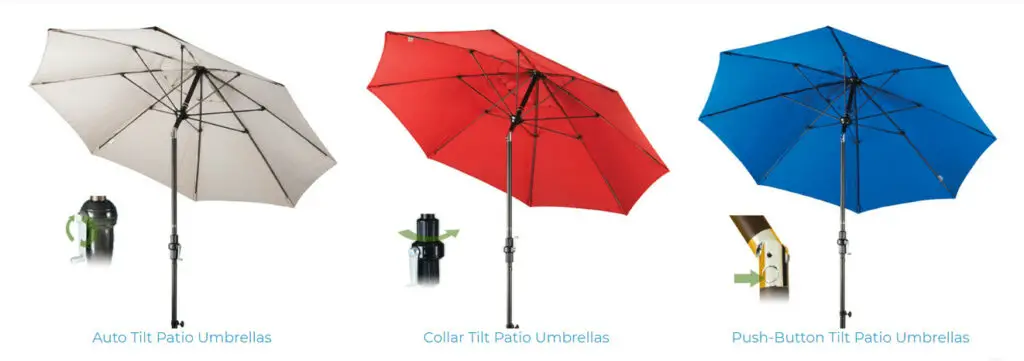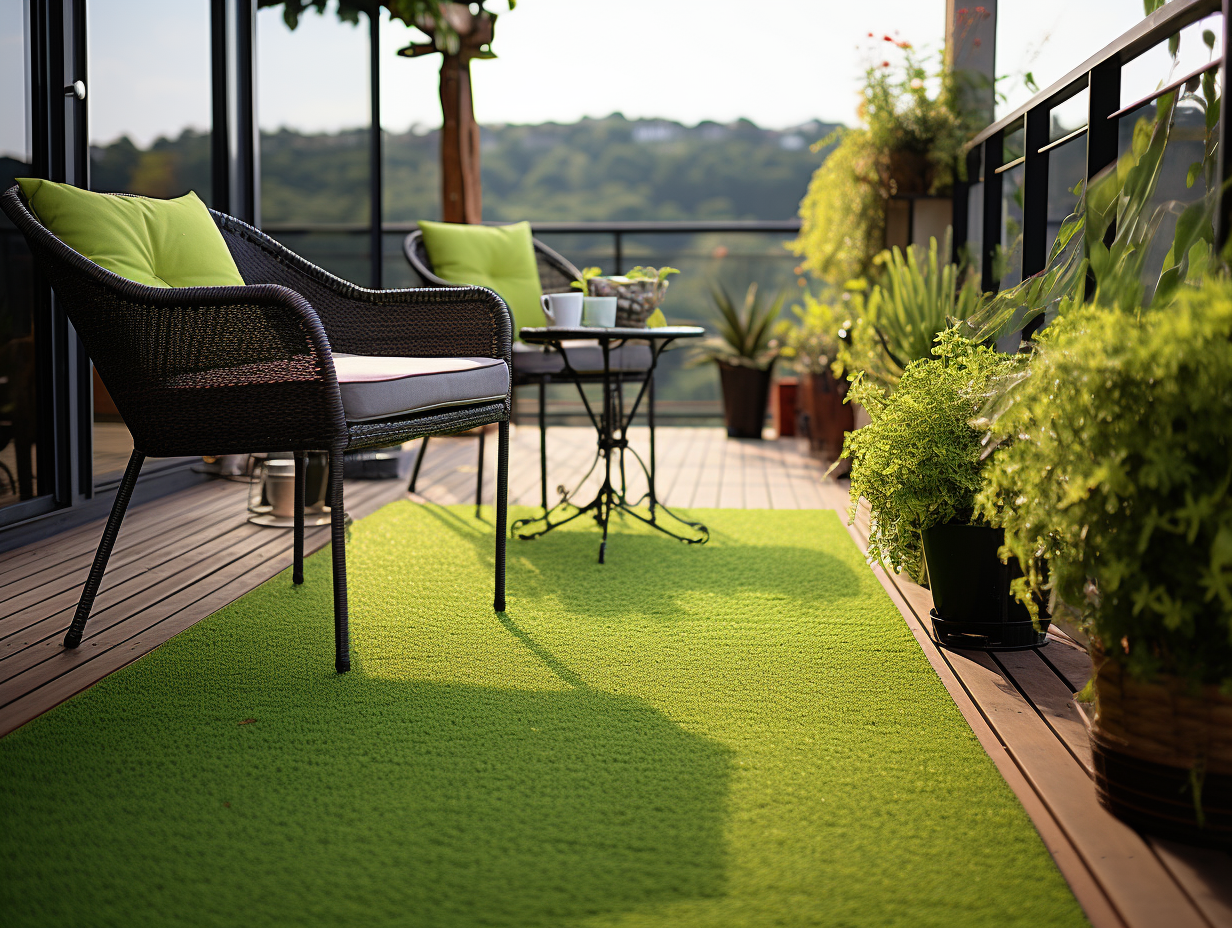
We’ve all been there. You’re working outside on a beautiful day, thinking about how great it would be to have some shade from the sun.
Then you realize that your umbrella is tilted in the wrong direction and it’s not doing anything for you at all.
Well, we’re here to help! This blog post will teach you how to tilt your patio umbrella so that it protects you from those harmful UV rays and keeps you comfortable during those hot summer days!
How to Tilt Your Patio Umbrella
The most common type of adjustable umbrella is the ‘crank and tilt’ type.
The umbrella ribs are opened and closed by the crank, and there is a joint that allows the umbrella pole to bend in one direction.
As if you were kneeling. A button usually serves as a latch for the joint, locking it in place in a straight line.
When the button is pressed, the joint moves, causing the latch to move out of line with the hole that held the top portion in place.
These buttons can rust over time and become difficult to use. To keep the joint flexible, keep it lubricated with WD40.
The same joint as before, but with a sleeve that locks over a lip on the bottom portion, is used in other ways to tilt. Lifting the sleeve should allow the joint to flex, allowing you to adjust the umbrella’s angle.
These joints that allow you to adjust your umbrella, as previously stated, can become rusted and/or clogged with debris.
A patio umbrella cover is a good idea for protecting your umbrella.
These covers will keep moisture, dirt, and debris out of the mechanism, reducing maintenance and extending the life of the machine. They can also be quite fashionable.

Types Of Tilting Patio Umbrellas
Auto Tilt Patio Umbrellas
The Automatic Tilt umbrella, also known as auto tilt umbrellas, is a fantastic invention that has completely transformed the look of our outdoor patio. This is a fantastic feature that has quickly become the most popular feature in any outdoor umbrella ever, and it’s very easy to use.
All aluminum umbrellas open by turning the crank, which is usually located just above most table heights.
The crank on most aluminum umbrellas is used to open them. However, the automatic tilt umbrella has an additional feature that is simply fantastic. Continue turning the umbrella crank after it is fully open, and the umbrella tilts.
Inside the umbrella pole, a series of mechanical levers and joints operate. Because automatic tilting does not rely on joint settings (instead, it relies on the tension and position of the interior cord to determine position), the tilting positions span the entire spectrum.
There are no preset or default tilt positions in an automatic tilt umbrella, so you can tilt it just a little, a little more, or fully.
The automatic tilt umbrella is the most popular tilting feature in the United States because of this.
In fact, the umbrella has become so popular that it’s difficult not to refer to it as outdoor furniture because it’s no longer limited to the outdoor table.
Collar Tilt Patio Umbrellas
The collar tilt umbrella is a neat little tilting innovation that first appeared in the early 1990s. It’s also known as an auto tilt, and it’s a great example of user-friendly engineering that can help you get the most out of your table umbrellas.
A collar tilt umbrella functions similarly to other aluminum market umbrellas. The umbrella opens when you turn the crank at the housing.
The collar tilt, on the other hand, is distinguished by a ring or “collar” that tilts the umbrella at the top of the crank housing.
You can tilt the umbrella by turning the collar. The collar tilt umbrella, like an auto-tilt, has infinite tilting positions.
For its smooth operation and differentiated tilting mechanism, many people prefer the collar-tilt to the auto-tilt.
Push-Button Tilt Patio Umbrellas
The granddaddy of all tilting umbrellas is the Push-Button Tilt patio umbrella. Push-button tilts have been around almost as long as the modern patio umbrella, and are based on a simple but sound engineering principle.
The push-button tilt evolved from an original hole-and-peg system and quickly became a standard umbrella feature.
The basic function is as follows: a button is located at the top of the umbrella pole, just below the umbrella ribs.
The button is usually a simple metal button with an inward curve. When you press the button inwards, a lock on the lever is released, allowing the umbrella to tilt.
With a push-button tilt, you typically have to manually hold the umbrella canopy in place to get it into the proper position.
The majority of high-quality push-button tilt umbrellas have three tilt positions; however, some are known to have only two or even one default tilt position.
You release the spring-loaded button once you’ve found the tilt position you want, and the umbrella tilting lever is locked in place.

![What Gravel To Use For Patio Base [Best Options]](https://www.cleverpatio.com/wp-content/uploads/2021/11/What-Gravel-To-Use-For-Patio-Base-270x180.jpg)


Leave a Reply